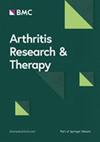银屑病关节炎的流行病学趋势:一项基于人群的综合研究
IF 4.9
2区 医学
Q1 Medicine
引用次数: 0
摘要
银屑病关节炎(PsA)是一种慢性、可能使人衰弱的炎症性关节炎,通常与银屑病有关。了解 PsA 在不同人群中的流行病学可为了解其全球负担以及遗传和环境因素的作用提供有价值的见解。本研究旨在估算 PsA 的时间趋势、患病率和发病率,同时评估 2016 年至 2022 年以色列的年龄、性别和种族差异。数据来源于Clalit健康服务(CHS)数据库,该数据库覆盖了以色列一半以上的人口。采用基于算法的 PsA 和银屑病病例定义。分析了人口统计学因素,包括年龄、性别、社会经济地位 (SES)、种族、城市/农村居住地、体重指数和吸烟状况。计算了标准化患病率和发病率。逻辑回归分析检验了社会人口学变量与 PsA 的关联。2022 年,PsA 患病率为 0.221%,发病率为每 10 万人 13.54 例。这一患病率自2006年以来增加了两倍,反映出PsA随着时间的推移呈上升趋势。女性发病率更高(1.15;95%CI 1.09-1.21),PsA 在犹太人(1.58;95%CI 1.45-1.71)、社会经济地位较高者(1.4;95%CI 1.31,1.5)和肥胖者(2.17;95%CI 2.04-2.31)中更为常见。这项以人群为基础的综合研究表明,PsA 的患病率正在上升,强调了这一患者群体所面临的日益增长的医疗保健需求和经济负担。进一步的研究对于深入探讨推动这些趋势的因素至关重要。本文章由计算机程序翻译,如有差异,请以英文原文为准。
Epidemiological trends in psoriatic arthritis: a comprehensive population-based study
Psoriatic arthritis (PsA) is a chronic, potentially debilitating inflammatory arthritis often associated with psoriasis. Understanding the epidemiology of PsA across diverse populations can provide valuable insights into its global burden and the role of genetic and environmental factors. This study aimed to estimate PsA’s temporal trends, prevalence, and incidence, while assessing variations in age, gender, and ethnicity in Israel from 2016 to 2022. Data were sourced from the Clalit Health Services (CHS) database, covering over half of the Israeli population. Algorithm-based definitions for PsA and psoriasis cases were used. Demographic factors, including age, gender, socioeconomic status (SES), ethnicity, urban/rural residence, BMI, and smoking status, were analyzed. Standardized prevalence and incidence rates were calculated. Logistic regression analyses examined associations of sociodemographic variables with PsA. In 2022, the prevalence of PsA was 0.221%, with an incidence rate of 13.54 per 100,000 population. This prevalence has tripled since 2006, reflecting a rising trend in PsA over time. Females exhibited a higher prevalence (1.15; 95%CI 1.09–1.21), and PsA was more common in Jewish individuals (1.58; 95%CI 1.45–1.71) those with higher SES (1.4; 95% CI 1.31, 1.5), and those with obesity (2.17; 95%CI 2.04–2.31). This comprehensive population-based study pointed to an increase prevalence of PsA, emphasizing the rising healthcare demands and economic burden faced by this patient population. Further research is essential to delve into the factors driving these trends.
求助全文
通过发布文献求助,成功后即可免费获取论文全文。
去求助
来源期刊

Arthritis Research & Therapy
RHEUMATOLOGY-
CiteScore
8.60
自引率
2.00%
发文量
261
审稿时长
14 weeks
期刊介绍:
Established in 1999, Arthritis Research and Therapy is an international, open access, peer-reviewed journal, publishing original articles in the area of musculoskeletal research and therapy as well as, reviews, commentaries and reports. A major focus of the journal is on the immunologic processes leading to inflammation, damage and repair as they relate to autoimmune rheumatic and musculoskeletal conditions, and which inform the translation of this knowledge into advances in clinical care. Original basic, translational and clinical research is considered for publication along with results of early and late phase therapeutic trials, especially as they pertain to the underpinning science that informs clinical observations in interventional studies.
 求助内容:
求助内容: 应助结果提醒方式:
应助结果提醒方式:


